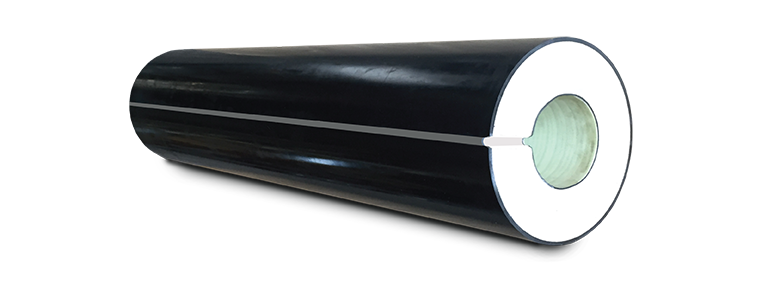
Over the years, the flexographic printing industry has witnessed massive developments. Traditional techniques, tools, and technology have been replaced by contemporary technology. Businesses are keeping abreast of the ever-changing market dynamics. Rightly so! If your business isn’t in line with the market, it wouldn’t sustain itself for long. As a consequence, leading businesses don’t hesitate in investing in innovation and new-age technology.
New age technology redefines the Flexographic Printing
Digital imaging technology is transforming the flexographic printing sector. Conventional plate making is gradually becoming redundant and obsolete. There’s no exaggeration when we say that modern technology is redefining process technology.
The last decades have witnessed major changes in Flexographic Printing enabling it to be compatible with both offset and gravure processes. Digital technology has been a boon for the manufacturer. More or less, the new age technology has reduced variability in flexo printing to a great extent.
As far as the current state is concerned, the sector is poised for a sizeable growth in the current financial year – 2021 since clients increasingly demonstrate faith and trust.
What’s Flexography?
Flexography is being used as a technique to apply designs and colours to a wide range of packaging materials. The packaging material includes paper and plastic containers (including waxed-paper ones), corrugated cardboard boxes, tape, envelopes, and metal foil. It’s a type of rotary printing wherein ink is adhered to different types of surfaces using flexile rubber printing plates.
Types of inks being used in Flexography
Readers often find themselves in a whirlpool while discussing about types of inks being used in Flexography. Here is the solution; there are different types of inks being used these days, including aniline inks (aniline dyes dissolved in alcohol or some other volatile solvent), polyamide inks, acrylic inks, and water-based inks.
Are these inks similar to oil-based printing inks? No, not at all! You would be surprised to know that these inks are far superior to oil-based printing inks. How come? Since they adhere to the surface of the material, whereas oil-based inks are required to be absorbed into the material.
Owing to a defined mechanism, inks used in flexography evaporate swiftly, making it safe to be used on wrappers!
Implementation of modern technology in flexographic printing sleeves is creating a huge window of opportunities in markets which is conventionally dominated by offset and gravure, including folding cartons and shrink sleeves.
Understanding Flexographic Printing Sleeves
The sophisticated equipment is employed to mount printing plates on it. Using compressed air, these are floated onto the air mandrel. In a conventional method, the Flexographic Printing Plates are mounted directly on the cylinders. However, since the method isn’t cost-effective, manufacturing companies are swiftly adapting to modern tools. Storage also created challenges.
As you know,“Necessity is the mother of invention,” using best-of-breed technology, the Flexographic Printing Sleeves were developed. In industry circles, these sleeves are also known as Plate carriers, Plate sleeves, or Press sleeves.
Sleeves are manufactured using different types of materials. These include thermoplastic composites, thermoset composites, and nickel. Depending on requirements, these can be reinforced with fiber. Reinforcement prevents it from cracking and splitting.
The reusable reinforced sleeves with foam or cushion are being used for high-quality printing; these are reusable in nature, whereas thin sleeves are developed after one-time use. The former is priced high in comparison to the latter.
Unique features
Tons of issues and challenges posed by conventional plate mounting have been eliminated using the latest technology-driven Rubber Roller Sleeves. As far as its unique features are concerned, it’s light in weight, durable and simple to use. Besides, working perfectly with less expensive substrates, including tissue, napkins, and paper towels, it’s an ideal material for laydown of solid and metallic inks in packaging applications.
Now, an important question emerges, how these sleeves are used? Well, according to industry experts, the sleeves are being utilized in numerous industries in two ways:
-
Carrier rolls for flat imaged plates mounted on the surface
-
Image directly engraved (in-the-round) on the sleeve surface
Industry
The sophisticated Flexographic Printing Rubber Rollers are being employed in various industries for numerous applications, including:
-
Food packaging
-
Medical packaging
-
Brown corrugated boxes
-
Flexible packaging
-
Self-adhesive labels
-
Newspaper and other print media
Custom-built Flexographic Printing Sleeves
Custom-built solutions expertise is a privilege of a few in industry circles since it requires a state-of-art facility, vast industry experience, and an astonishing team. Customized to meet the requirements of a particular dimension and size, custom-built solutions are tailored to specific demands.
Summary
Modern machinery and technology are a blessing in disguise for the Flexographic Printing Sleeves sector. It wouldn’t be an exaggeration to say that the sector has gone for a massive transformation over the years. Conventional methods have been replaced to usher in the new era. It also reflects the foresightedness of industry stalwarts who are setting new benchmarks!


